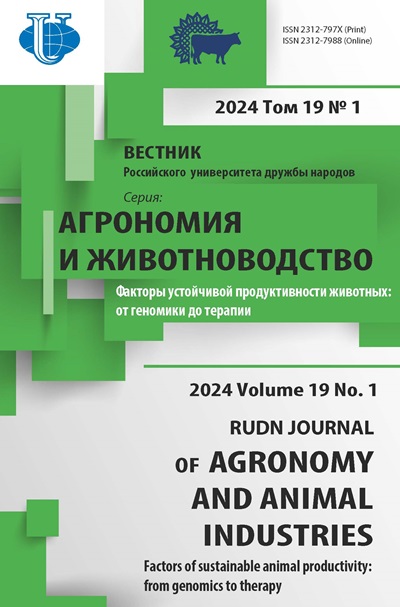Features of development of the axial and peripheral skeleton of guinea fowls of white volga breed after the birth
- Authors: Kulikov EV1, Sotnikova ED1
-
Affiliations:
- Peoples' Friendship University of Russia
- Issue: No 2 (2015)
- Pages: 74-80
- Section: Articles
- URL: https://agrojournal.rudn.ru/agronomy/article/view/1356
- DOI: https://doi.org/10.22363/2312-797X-2015-2-74-80
Cite item
Full Text
Abstract
When studying dynamics of body height and development of axial and peripheral departments of a skeleton of guinea fowls it is established that these processes happen in close interrelation with body height of alive weight and a skeleton of guinea fowls in general. At guinea fowls males in development after the birth the relative mass of an axial skeleton to the absolute mass of a skeleton decreases - from 27,17% (at daily age) to 26,19% (at the age of 365 days) while at guinea fowls females this indicator increases - from 25,46% (at daily age) to 29,08% (at the age of 365 days). On a similar index of a peripheral skeleton the inverse picture is observed. It is bound to egg efficiency at guinea fowls females (the axial department of a skeleton grows more intensively) and to meat efficiency at tsesarey-males (the peripheral department of a skeleton grows more intensively).
Keywords
About the authors
E V Kulikov
Peoples' Friendship University of Russia
Author for correspondence.
Email: eugeny1978@list.ru
Department morphology of animals and veterinary sanitarian inspection
E D Sotnikova
Peoples' Friendship University of Russia
Email: dean@agro.pfu.edu.ru
Department of clinical veterinary science
References
















